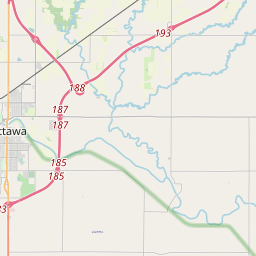Civil War Memorial
Historical marker location:





Our Heroes
April 12, 1861: The Civil War begins with the Confederate attack on Fort Sumter, located in South Carolina's Charleston Harbor.
April 15, 1861: President Abraham Lincoln issues a call for 75,000 volunteers to serve in the Union Army to suppress the rebellion.
May 24, 1861: The first major land battle, known as the First Battle of Bull Run (or First Battle of Manassas), takes place in Virginia. It ends in Confederate victory.
September 17, 1862: The Battle of Antietam in Maryland becomes the bloodiest single-day battle in American history, with heavy casualties on both sides. The Union forces, commanded by General George McClellan, manage to halt Confederate General Robert E. Lee's advance into Union territory.
January 1, 1863: President Lincoln issues the Emancipation Proclamation, declaring that all slaves in Confederate-held territories are to be set free. However, the proclamation does not immediately free all slaves in the United States.
July 1-3, 1863: The Battle of Gettysburg in Pennsylvania takes place, resulting in a significant Union victory and inflicting heavy casualties on Confederate forces. It marks a turning point in the war.
November 19, 1863: President Lincoln delivers the Gettysburg Address, emphasizing the principles of liberty, equality, and the preservation of the Union.
April 9, 1865: General Robert E. Lee surrenders to Union General Ulysses S. Grant at Appomattox Court House in Virginia, effectively ending the Civil War.
April 14, 1865: President Lincoln is assassinated by John Wilkes Booth while attending a play at Ford's Theatre in Washington, D.C.
May 10, 1865: Confederate President Jefferson Davis is captured, signaling the collapse of the Confederate government.
December 6, 1865: The Thirteenth Amendment to the United States Constitution is ratified, officially abolishing slavery throughout the country.
While this timeline provides an overview of key events, it is important to note that the Civil War spanned over four years, from 1861 to 1865, and encompassed numerous battles, campaigns, and political developments that shaped the course of American history.
Amelia Earhart, the famous aviator, was born in Atchison, Kansas in 1897.
In the early 1800s, European settlers began to move into the area. The first permanent settlement was established in 1855, and Osage County quickly grew with the arrival of more settlers. The county was officially organized in 1859, with its name derived from the Osage tribe who had once inhabited the area.
During the Civil War, Osage County played a significant role. Many residents of the county were divided in their loyalties, with some supporting the Union and others the Confederacy. The county saw its fair share of skirmishes and raids, but ultimately remained a Union stronghold.
In the late 19th and early 20th centuries, Osage County experienced economic growth and industrialization. The discovery of oil in the county in the 1890s brought a boom to the local economy and led to the development of numerous oil wells. Today, Osage County remains an agricultural and oil-producing region, attracting visitors with its natural beauty and historical landmarks.
Osage County Timeline
This timeline provides a glimpse into the major events and milestones that have shaped the history of Osage County, Kansas.
- 1855 - The territory that would become Osage County, KS was established as part of the Kansas Territory.
- 1857 - Osage County was officially organized and named after the Osage Native American tribe.
- 1861 - The Civil War began, and Osage County experienced some conflicts and military activity.
- 1866 - The first railroad, the Missouri, Kansas and Texas Railroad, was completed in Osage County.
- 1872 - The town of Burlingame was incorporated.
- 1878 - The town of Osage City was incorporated.
- 1881 - Scranton and Quenemo were incorporated as towns.
- 1882 - Lyndon was incorporated.
- 1889 - Carbondale was incorporated as a city.
- 1911 - The Marais des Cygnes River flood caused significant damage to Osage County.
- 1955 - Pomona State Park was established within Osage County.
- 2002 - The Flint Hills Nature Trail, a popular recreational trail, opened in Osage County.